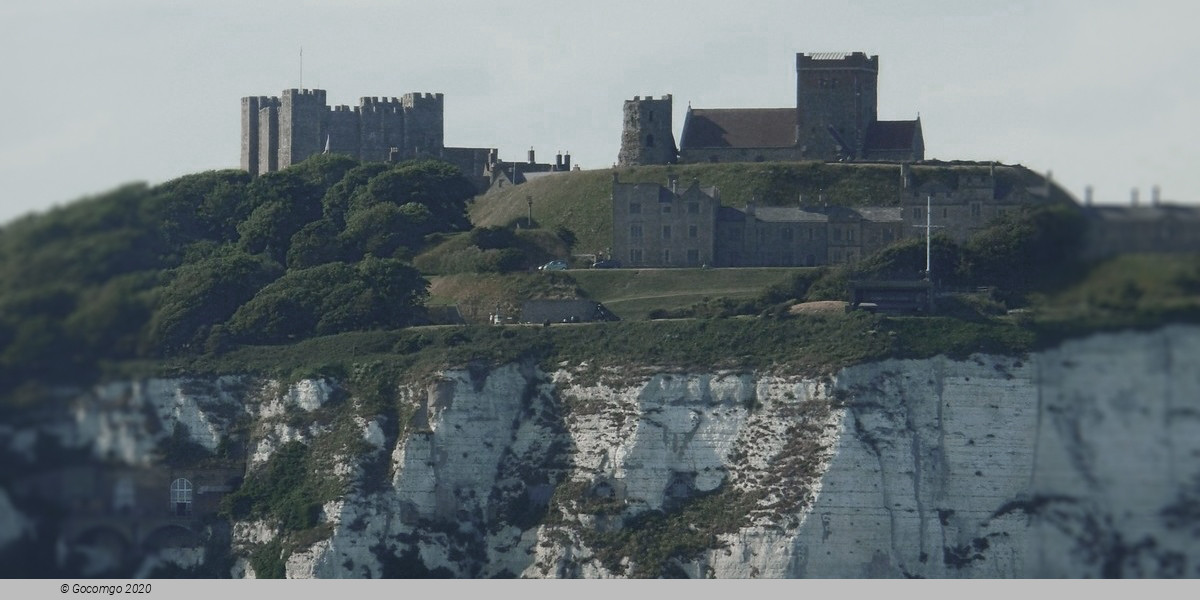Dover

Dover is a town and major ferry port in Kent, South East England. It faces France across the Strait of Dover, the narrowest part of the English Channel at 33 kilometres (21 mi) from Cap Gris Nez in France. It lies south-east of Canterbury and east of Maidstone. The town is the administrative centre of the Dover District and home of the Port of Dover. Archaeological finds have revealed that the area has always been a focus for peoples entering and leaving Britain. The name derives from the River Dour that flows through it.
History
Archaeological finds have shown that there were Stone Age people in the area, and that some Iron Age finds also exist. During the Roman period, the area became part of the Roman communications network. It was connected by road to Canterbury and Watling Street and it became Portus Dubris, a fortified port. Dover has a partly preserved Roman lighthouse (the tallest surviving Roman structure in Britain) and the remains of a villa with preserved Roman wall paintings. Dover later figured in the Domesday Book.
Forts were built above the port and lighthouses were constructed to guide passing ships. It is one of the Cinque Ports. and has served as a bastion against various attackers: notably the French during the Napoleonic Wars and Germany during the Second World War.
In 1974 a discovery was made at Langdon Bay off the coast near Dover. It contained bronze axes of French design and is probably the remainder of the cargo of a sunken ship. At the same time, this find also shows that trade routes across the Channel between England and France existed already in the Bronze Age, or even earlier. In 1992, the so-called Dover boat from the Bronze Age was discovered in six metres depth underwater. This is one of the oldest finds of a seaworthy boat. Using the radiocarbon method of investigation, the year 1550 BC was determined as the year of construction of the boat.
Etymology
First recorded in its Latinised form of Portus Dubris, the name derives from the Brythonic word for water (dwfr in Middle Welsh, dŵr in Modern Welsh). The same element is present in the town's French name Douvres and the name of the river, Dour, which is also evident in other English towns such as Wendover. However, the modern Modern Welsh name Dofr is an adaptation of the English name Dover.
The current name was in use at least by the time of Shakespeare's King Lear (between 1603 and 1606), in which the town and its cliffs play a prominent role.

